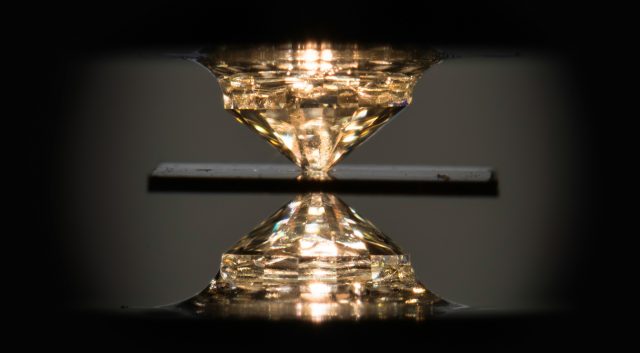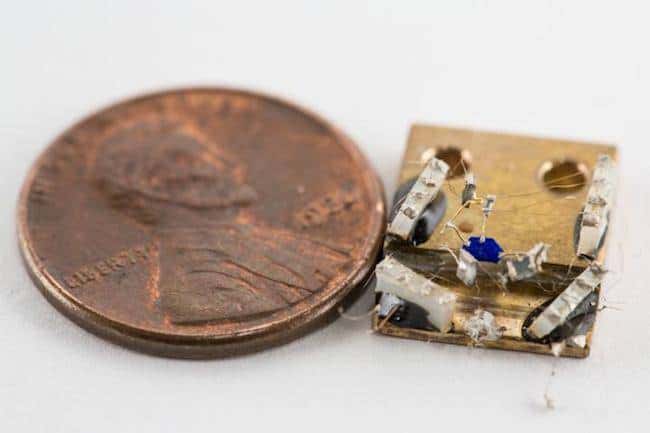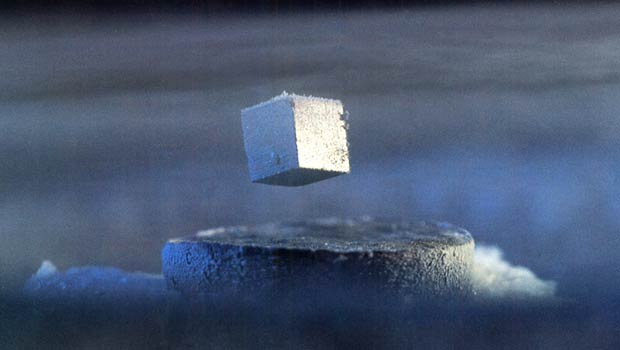
Achieving superconductivity (zero electrical resistance) at room temperature would revolutionize the way we generate energy, transfer data, or build computers. In an exciting new study, researchers at the University of Rochester claim they’ve discovered a hydrogen-rich material that is superconductive at 15°C (59°F). That’s a wee bit chilly room temperature if you live at a higher altitude and you hate paying for heating.
Although this is an extremely impressive breakthrough in physics, don’t open those champagne bottles yet. Deploying this technology is by no means straightforward since the material had to be subjected to immense pressure for electrons to pass through it with no loss.
Closer to a superconductive dream
Superconductivity was first discovered by Dutch Physicist Heike Kamerlingh Onnes in 1911, when he and his students found that the electrical resistance of a mercury wire, cooled to about 3.6 degrees above absolute zero, made a dramatic plunge. The drop was enormous – the resistance became at least twenty thousand times smaller than at room temperature. Ever since then, scientists have struggled to understand this peculiar state — but there has been very good progress.
For instance, we know superconductivity is a quantum mechanical phenomenon characterized by the Meissner effect – the complete ejection of magnetic field lines from the interior of the superconductor as it transitions into the superconducting state.
The most common superconductors typically have to be cooled down with liquid nitrogen close to -250°C (-480°F) for them to conduct electricity with no resistance. In this state, the conductor is composed of a rigid lattice of positive ions drowned in a sea of electrons.
A normal conductor has electrical resistance because electrons moving through the lattice also bump into it, slowing down in the process. This motion also causes atoms to vibrate, which is why electrical resistivity also leads to heat loss.
On the other hand, in a superconductor, the lattice is so rigid due to the low temperature that mechanical sound waves (phonons) ripple through it — and electrons ride the wave along with them. What’s more, electrons in a superconductor form bonds called ‘Cooper pairs’ which flow through the material like a fluid. When the temperature rises, the Cooper pairs break apart and the superconductive state dissolves.
In 2018, scientists in Germany achieved superconductivity at –23 °C, the average temperature at the North Pole. But the superconductivity temperature achieved by the Dias Group at the University of Rochester — who used sulfur and carbon, then added hydrogen, forming hydrogen sulfide(H2S) and methane (CH4) — marks a dramatic jump forward.
“Efforts to identify and develop room temperature superconducting materials are an intensive area of research, motivated by both fundamental science and the prospects for applications. More than a century of rigorous research has led physicists to believe that the highest Tc that can be achieved is 40K for the conventional superconductors. However, the recent discovery of superconductivity in hydrogen sulfide at 203K changed the notion of what might be possible for phonon–mediated superconductors. This paradigm shift in our understanding on superconductivity centered around hydrogen—the most abundant element in the universe,” the researchers wrote.
There’s a catch though: the hydrogen, sulfur, and carbon were sandwiched between two diamond anvils and compressed to 2.6 million atmospheres of pressure. That’s 2,600 higher than the pressure found at the bottom of the Marianas trench or roughly 75% of the pressure found at Earth’s core. In other words, this material is by no means viable for applications in the real world.
Nevertheless, this work is of real importance. It shows that stable room-temperature superconductors indeed exist. This is just one piece of the puzzle — perhaps the rest that might complete the big picture will soon follow.
The findings were reported in the journal Nature.






